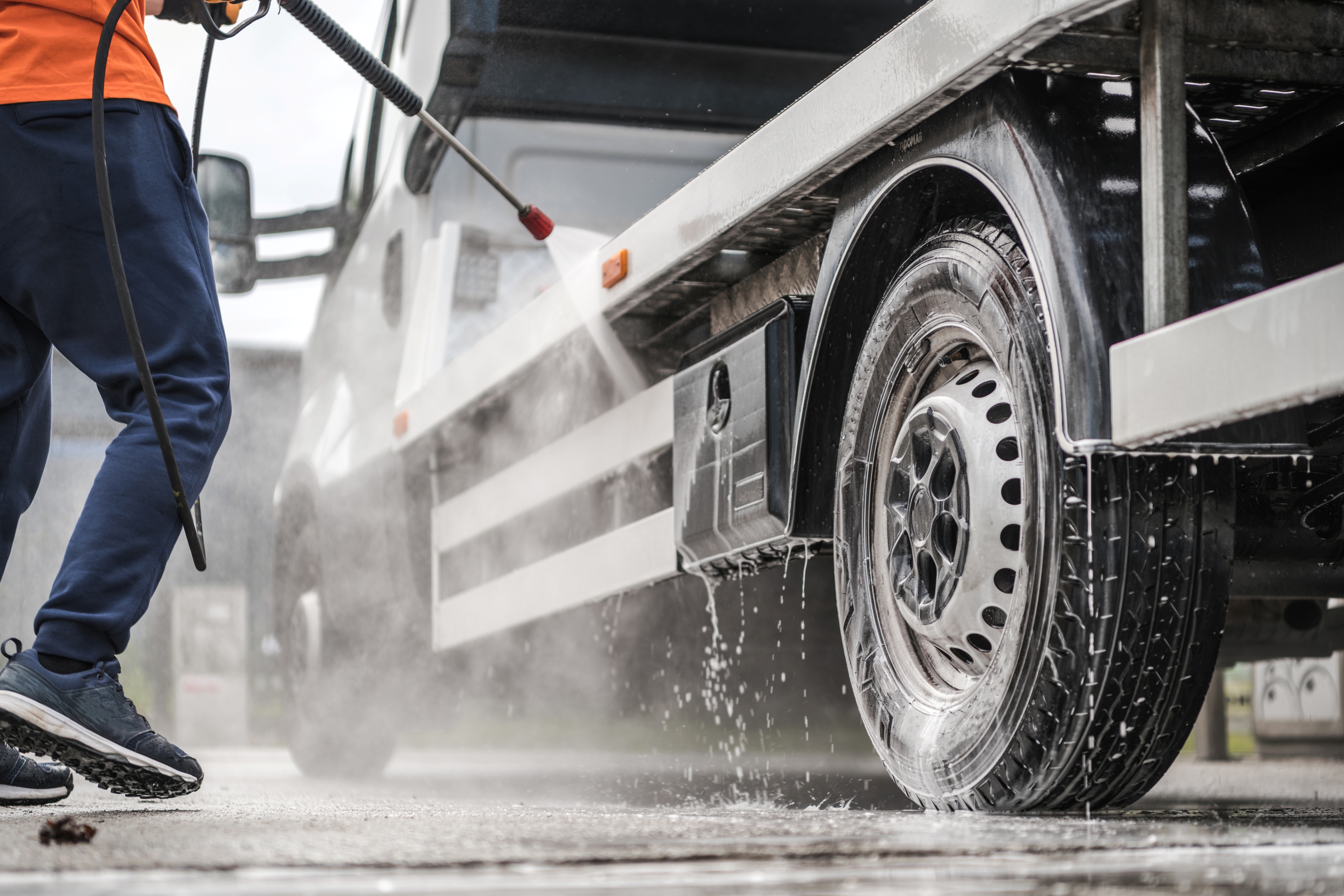
Miranda Blake
Cómo encontrar un túnel de lavado cerca de usted
Creado: 23/10/2024
•
Actualizado: 01/11/2024
Tanto si transporta mercancías a través de fronteras internacionales como si gestiona una flota de camiones pesados, asegurarse de que sus vehículos se limpian a fondo y reciben un buen mantenimiento puede tener un impacto significativo en su rendimiento, longevidad y eficiencia operativa general. Afortunadamente, es fácil encontrar un lavadero de camiones fiable y práctico cerca de su ubicación - siga leyendo para averiguar cómo.
¿En qué consiste el lavado de camiones?
Cuando se trata de la limpieza de vehículos, los camiones necesitan instalaciones y equipos especializados para satisfacer sus necesidades específicas.
Ubicación y accesibilidad
Los lavaderos de camiones están estratégicamente situados a lo largo de las principales autopistas y salidas interestatales, lo que garantiza un fácil acceso y una interrupción mínima del flujo de vehículos pesados. Esta ubicación permite a los conductores de larga distancia llegar rápida y cómodamente a los servicios de limpieza necesarios sin las dificultades de circular por las congestionadas calles de la ciudad.
Requisitos de equipamiento e instalaciones
Dado que los camiones necesitan maquinaria más robusta y potente para hacer frente a la suciedad, la mugre y los residuos de la carretera que se acumulan en sus amplias superficies, los servicios de lavado suelen contar con naves más grandes, espacios más elevados y equipos especiales, como lavadoras de alta presión y cepillos de largo alcance.
Consumo de recursos y costes
Lavar un camión suele requerir más agua y electricidad debido al tamaño y volumen de los vehículos, así como a la necesidad de procedimientos de limpieza más intensivos. Este mayor uso de recursos se traduce en mayores costes operativos, que luego se reflejan en el precio.
Oferta de servicios y especialización
Los lavaderos de camiones suelen centrarse en una limpieza exterior exhaustiva, incluidos servicios especializados como el desengrasado de motores y el lavado de guardabarros, para hacer frente a las necesidades y retos específicos de mantener la limpieza de los vehículos industriales pesados.

Navegar por el paisaje del lavado de camiones con SNAP
Encontrar la instalación adecuada a sus necesidades puede ser una tarea desalentadora. Aquí es donde SNAP, proveedor de servicios integrados para el sector del transporte por carretera, interviene para simplificar su viaje.
Extensa red de lavaderos de camiones
Nuestra red se extiende por toda Europa, con más de 230 centros que atienden específicamente las necesidades de los operadores de vehículos industriales. Están estratégicamente situados a lo largo de las principales autopistas y nudos de transporte, lo que garantiza que los conductores puedan acceder fácilmente a los servicios de limpieza necesarios sin interrumpir sus horarios o rutas.
Eche un vistazo a nuestro mapa SNAP y vea cómo encontrar instalaciones cerca de usted.
Integración perfecta
La Cuenta SNAP se integra con la red de lavaderos de camiones, permitiendo a los conductores y a los operadores de flotas pagar cómodamente sus servicios utilizando una cuenta única y segura. Esto elimina la necesidad de efectivo o de múltiples métodos de pago, agilizando la experiencia de limpieza y proporcionando una solución integral para gestionar los gastos de la flota.
Soluciones de lavado de camiones a medida
Desde la limpieza exterior a alta presión hasta el lavado especializado del tren de rodaje y el desengrase del motor, los túneles de lavado de camiones de SNAP están equipados con todo el equipo y la experiencia necesarios para ofrecer una experiencia minuciosa y eficaz.
Aparcamiento de cocheras seguro y accesible
Además de nuestros servicios de lavado de camiones, también ofrecemos una red de aparcamientos Depot seguros y accesibles en toda Europa. Estos aparcamientos específicos, exclusivos para titulares de cuentas SNAP, ofrecen características de seguridad mejoradas y la comodidad de reservar con antelación plazas de aparcamiento a través de intruck, nuestra aplicación móvil. De este modo, los conductores tienen la tranquilidad de que sus vehículos están seguros y son accesibles.
Gestión optimizada de flotas con SNAP
Mediante la integración de nuestra completa gama de servicios, los operadores de flotas pueden agilizar sus operaciones y lograr una mayor eficiencia. Desde el lavado de camiones sin interrupciones y el aparcamiento seguro hasta la gestión del combustible y los pagos en el paso fronterizo de Dartford, nuestras soluciones permiten a los gestores de flotas centrarse en sus principales objetivos empresariales, al tiempo que aprovechan al máximo el poder de la tecnología para optimizar sus procesos.
Aumente el rendimiento de su flota con SNAP
Mantener la limpieza y el bienestar de sus vehículos comerciales es un aspecto fundamental para garantizar la excelencia operativa. Aprovechando la amplia red de instalaciones especializadas de SNAP, puede aumentar el rendimiento y la longevidad de su flota, simplificando al mismo tiempo la gestión general de sus operaciones de transporte.
Nuestros servicios integrados ofrecen una solución completa que satisface las necesidades exclusivas del sector de los vehículos industriales. Le permitimos concentrarse en lo más importante: entregar su carga de forma segura y eficiente, minimizando las molestias y maximizando la rentabilidad de su negocio.
Así que, mientras navega por la carretera, deje que SNAP sea su socio de confianza para preservar el perfecto estado de sus vehículos. Regístrese gratis hoy mismo



